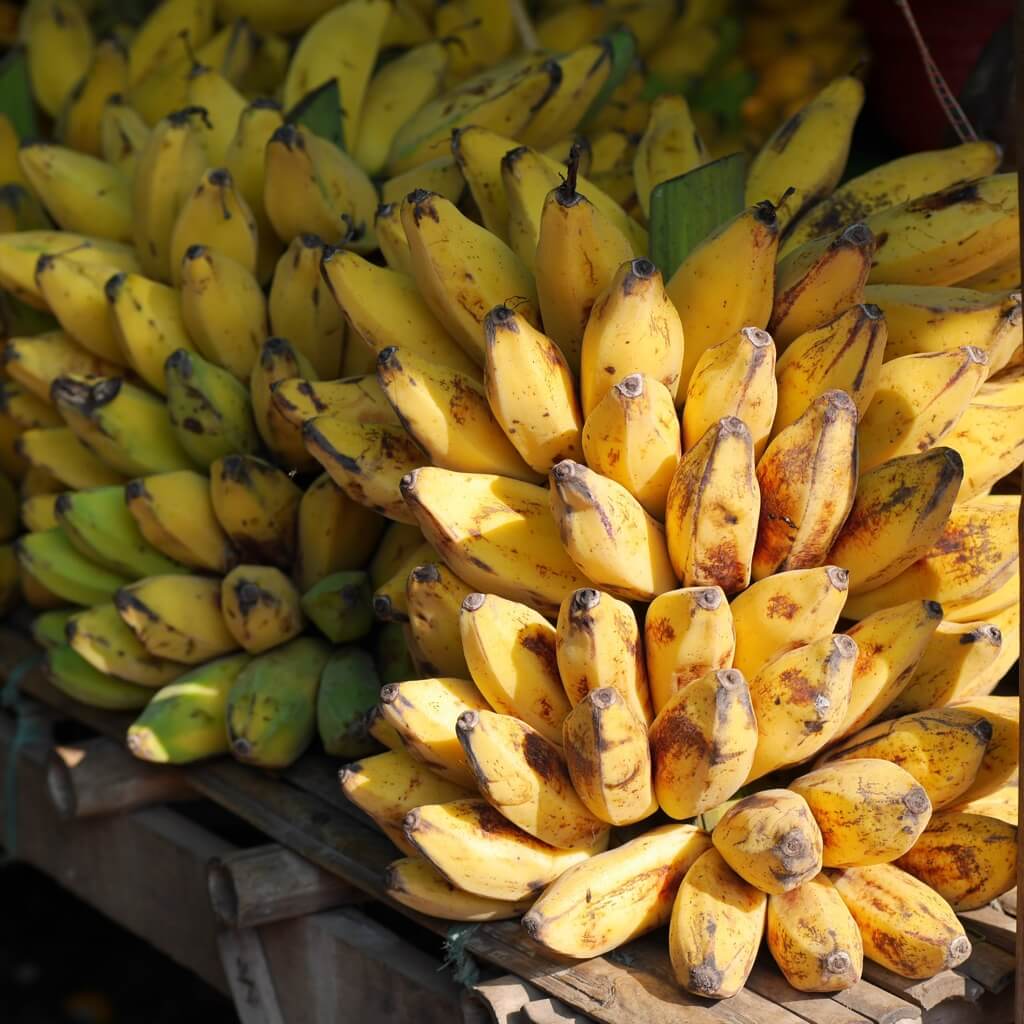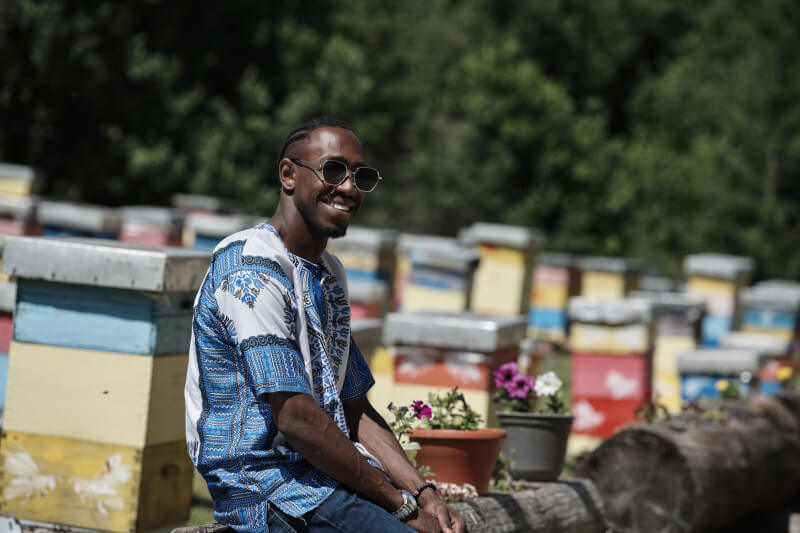Bananas turning black in the fridge might have startled many, leading to misconceptions about them releasing some kind of “poison gas.” Let’s debunk that right away. While the banana peel might look a tad unappetizing after a stint in the fridge, the fruit inside is as delectable as ever.
The Science Behind The Darkened Peel
Ever wondered why the banana’s exterior turns dark in the cold? It’s due to the enzyme called polyphenyl oxidase in the bananas. This enzyme transforms the phenols in the skin into polyphenols, causing it to look almost rotten. But don’t let looks deceive you. Underneath that darkened skin, the banana’s flesh remains fresh, sweet, and ready to eat.
When to Refrigerate Your Bananas
Timing is crucial. Companies like Chiquita emphasize that bananas should only hit the cold when they’re at your preferred level of ripeness. If you prematurely refrigerate them, they might never ripen again, even when returned to room temperature.
Making The Most Out of Your Refrigerated Bananas
For those not fond of a cold bite, there’s a simple solution. After fetching your banana from the fridge, let it sit out for about 30 minutes to an hour. Once it’s back to room temperature, peel away the dark skin, and you’ll have a perfectly ripe banana waiting for you.
Alternative Methods to Keep Your Bananas Fresh
If the visual appeal of your fruit matters to you, there are other ways to extend the life of your bananas. Separating them from other fruits and even from other bananas can make a difference. Bananas release ethylene, a hormone that can speed up the ripening process of itself and surrounding fruits. If you’re looking to speed up the ripening of other fruits, pop them in a paper bag with a ripe banana. The ethylene will do its magic, ensuring quick and healthy ripening.
Selecting Bananas for Extended Enjoyment
A handy tip? When buying bananas, mix and match. Choose some that are ready to be eaten immediately and others that need more time. This staggered ripeness ensures that you’ll always have a fresh banana on hand. Separate them and store them in different containers to ensure none go to waste.
The Pre-Ripening Process of Bananas
You might be intrigued to learn that the bananas you buy aren’t fully ripened on the tree. To extend their shelf-life and reduce the risk of bruising during transit, bananas are harvested while they’re still green and firm. To get them market-ready, these bananas undergo an artificial ripening process, where they are exposed to ethylene gas for a duration of 24 to 48 hours in confined rooms. This process ensures you get that perfectly yellow, ready-to-eat banana from your local store.
The Science Behind Ethylene
Ever wondered how bananas ripen so uniformly? The secret ingredient is ethylene. This gas, produced by catalytic generators reacting with liquid ethanol, plays a pivotal role in the ripening process. Exposing bananas to a concentration of 500 to 2000 ppm of ethylene ensures they’re ripe and delicious for your consumption.
A Bad Apple’s Influence
“You’re the apple of my eye,” might be a sweet saying, but be cautious around a rotten apple. One damaged or rotten apple can emit a higher concentration of ethylene, quickening the rotting process of other fruits in its vicinity. So, when storing your apples, it’s wise to keep an eye out and remove any that seem to be turning bad, ensuring the rest of your fruit remains fresh.
Ancient Ripening Techniques
The fascinating history of ethylene stretches back thousands of years. Ancient Egyptians would slice figs, releasing ethylene to accelerate ripening. Meanwhile, in China, certain incense types were known to hasten the ripening of pears when burned in confined spaces. Although these ancient cultures effectively used ethylene, they were unaware of the science behind this mysterious ripening agent.
The Multifaceted Ethylene
Russian scientist Dimitry Neljubow in 1901 observed abnormal plant growth patterns, like thickened stems, which he attributed to ethylene. The versatile nature of ethylene doesn’t stop at just ripening fruits. It stimulates root and shoot growth, helping plants break dormancy, aids in flower bud expansion, and even triggers fruit fall. So, if you’re looking to encourage a plant to bloom, placing some banana peels beside it might just do the trick!
Debunking the Refrigeration Myth
Do you think refrigerating bananas makes them toxic? Think again. This myth likely sprouted when Chiquita Banana commercials advised against refrigeration. However, modern guidelines from Chiquita’s advise otherwise: once your bananas reach your preferred ripeness level, it’s perfectly fine to store them in the fridge.
Maximizing Your Banana Shelf Life: Practical Tips
Choose Your Bananas Wisely
When shopping, pick bananas at different ripening stages. By doing this, you’ll have bananas ready to eat on different days, ensuring none go to waste.
Consider Your Storage Options
Store your bananas at room temperature until they reach your desired ripeness level. If you want to slow down the ripening process, consider placing them in the fridge. Remember, while the skin might darken, the fruit inside remains perfect.
Separate to Regulate
Did you know that bananas release ethylene, a ripening hormone? To prevent a ripening domino effect, keep bananas separate from other fruits, and even from each other if they’re from the same bunch.
Use the Bag Trick for Quick Ripening
If you’re eager to eat a green banana, place it in a paper bag. The enclosed environment will trap ethylene, speeding up the ripening process. For even quicker results, add an already-ripe banana to the mix.
Don’t Fear the Fridge
Contrary to popular belief, refrigerating bananas won’t spoil them. If you like your bananas a bit chilled or wish to prolong their ripe state, feel free to pop them in the refrigerator. If cold bananas aren’t your thing, let them sit out for a bit before enjoying them.
Monitor External Factors
Keep your bananas away from direct sunlight or heating elements. Excessive heat can speed up the ripening process significantly.
Utilize Leftover Peels
Don’t just throw away those peels! Placing banana peels near certain plants can encourage them to bloom, thanks to the ethylene. Give it a try and see your plants thrive.
Stay Informed
Always be open to new information. As research evolves and more discoveries are made, best practices for storing fruits like bananas might change. Stay updated and enjoy your bananas to the fullest!




